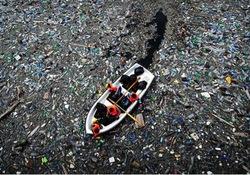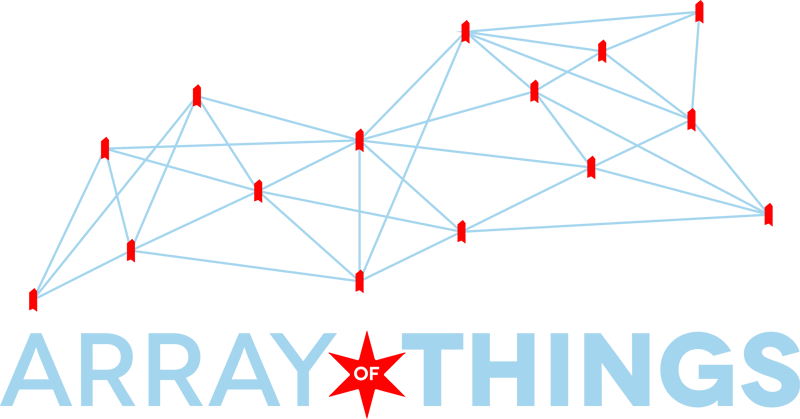Consumer Finance Companies Step Up with Forward-Thinking Solutions


By Arthur Newman
To put it mildly, consumers haven’t always had a favorable view of finance companies, especially after the Great Recession. Until recently, the pure focus of the vast majority of consumer finance companies, such as banks and credit card providers, has been to maximize profit, fees and other “fine-print” costs. These practices rarely sit well with the public, as they often generate distrust and skepticism.
Further, the public is demanding more and more social responsibility from the organizations from which they buy goods or services, and forward-thinking financial services companies are figuring this out.
Consumers shifting toward responsible companies
While there will always be naysayers pointing to the dwindling group of indifferent consumers, the evidence is clear that more that 80 percent of global consumers care about corporate social responsibility (CSR). Not only do they care, but it also influences their decisions regarding what to buy or where to shop (87 percent), which products and services to recommend to others (85 percent), and even where to work (81 percent). Additionally, 62 percent of Americans feel it is important to buy goods or services from socially responsible companies, and 30 percent actually increased their socially responsible shopping in 2014. On top of this shift in the majority of attitudes, 42 percent of North American consumers say they are willing to pay more for products and services provided by companies that are committed to positive social and environmental impact
As in the case of the fossil fuel industry, consumer finance companies’ talk of sustainability can evoke strong skepticism and accusations of greenwashing or hype. Commitment has to be tangible: a measurable, additive and verifiable improvement, rather than simply adhering to current regulations or running self-congratulatory marketing ads. Designing sustainability programs for financial services is additionally challenging because the traditional CSR focus on areas such as production, transportation and supply chain sometimes do not apply to finance companies. Thus, a greater level of creativity is required. Sometimes social responsibility initiatives can be internally focused on areas such as power usage, power consumption and wage practices. Alternatively, the focus may be on using the business to drive external goods, such as providing funding to address social problems.
Moreover, for sustainability initiatives to be credible, companies must also look at their investments to see where divestment in environmentally harmful industries should occur.
An innovative approach to 'green' consumer banking
A few forward-thinking organizations are developing financial products and funding models that have the potential to do great good, while simultaneously incentivizing consumers for sustainable actions. Case in point is Sustain:Green, which recently introduced the biodegradable Sustain:Green MasterCard, issued by Commerce Bank, which helps consumers reduce their carbon footprint and fund rainforest preservation through transparent retirement of carbon offsets.
For every dollar in net merchandise purchases made with the Sustain:Green MasterCard, the company reduces the user’s carbon footprint by 2 pounds. In addition, a bonus 5,000 pounds of CO2 are eliminated after the card’s first use, with other bonuses based on spending throughout a given financial quarter. In a sense, Sustain:Green is creating an automatic consumer market for carbon offsets, where the industry has struggled to motivate consumers on their own.
How does Sustain:Green overcome public skepticism? First, the process is automatic; the user doesn’t have to do or pay anything to be rewarded with offsets, and the card has no annual fee. Second, it’s transparent: Users can track the reduction of their carbon footprint through their personal online dashboard, and both this reduction and the provision of money to the Mata No Peito rainforest initiative is recorded by the American Carbon Registry and verified by the nonprofit Winrock International. Finally, the card itself is biodegradable. This has both real and symbolic significance to the cardholder, as a way to avoid adding to landfills and as a sign of Sustain:Green’s commitment. Currently, it’s the only known biodegradable credit card in the U.S.
Triple-bottom-line solutions for the finance industry
Financially-focused B Corporations are also challenging the status quo. An interesting example is TripZero. When the user makes a hotel reservation through TripZero, the company figures out the user’s entire carbon footprint for the trip and erases it through carbon offsets, at no charge to the user. Then there is San Francisco-based New Resource Bank, which advertises itself as “Planet-Smart Banking.” The bank’s ambitious goal is “a loan portfolio 100 percent invested in enterprises that are advancing sustainability.” By becoming a B Corp, companies substantiate their sustainability claims, improving their credibility with both consumers and potential investors.
Green banks are also financial institutions committed to the triple bottom line: people, planet and profit. These institutions provide financing for clean tech and sustainability projects, particularly relating to renewable energy, “by leveraging public funds … to attract private investment so that each public dollar supports multiple dollars of private investment,” according to the Coalition for Green Capital. Leading banks in this category are the Connecticut Green Bank (formerly CEFIA) and the New York Green Bank. Neither bank is funded by new appropriations generated by taxing consumers. Instead, existing state funds, called “systems benefit charges,” are repurposed, and Regional Greenhouse Gas Initiative (RGGI) funds are also funneled to them. Finally, both state banks, as government-created entities, have built-in accountability. The Connecticut Green Bank must publish an annual Comprehensive Plan, and the New York Green Bank practices transparency through public filings, including quarterly reports.
Community Development Banks also fit into this triple-bottom-line activity. A good example of such an institution is Beneficial State Bank, which serves California, Oregon and Washington. The bank is not exclusively environmental in its mission – it’s equally concerned with social justice and economic sustainability – but ecology is a major focus. By examining the pie chart in its annual report, in which the organization divides up its outstanding loans by purpose, 10 percent of the loans went for clean tech and 7 percent were for sustainable food and agriculture. Just as importantly, the bank commissioned an inventory of greenhouse gases (GHGs) for its entire operation. It then purchased the equivalent of the total in carbon offsets.
These institutions – credit card providers, Green Banks, the B Corporation certification program and Community Development Banks – all have different relationships with green enterprises. They all also have different means to demonstrate accountability: the American Carbon Registry (Sustain:Green), official government reports (the Green Banks), The B Corp standard (the B Corporations) and annual reports (Beneficial State Bank).
However, they all have one thing in common: Unlike too many modern companies, they put long-term sustainability above short-term profit. As the public continues to demand environmental responsibility to a greater and greater degree in all their products, including financial ones, these organizations are poised to excel in a growing market. Despite their progressive marketing, their business behavior is conservative; they demonstrate that to move forward toward greater sustainability requires going back to business basics, responding to consumer demands, and taking care of both people and planet, in addition to profits.
Image credit: Flickr/Duncan Smith/Corbis via Myfuture.com
Arthur Newman is the CEO of Sustain:Green, which combines social and environmental responsibility with innovative biodegradable credit cards and prepaid cards designed to fight climate change. Arthur is also a partner at Carbon Capital Advisors. Before founding Sustain:Green, Arthur was a partner at Halpern Capital, Global Sector Director for Internet, Software and IT Services at ABN-AMRO, and a Wall Street internet analyst at Schroders and Gerard Klauer Mattison.
Water Is Everything


Submitted by Nassy Avramidis
This is the most recent article in our series on Water - Scarcity and Solutions. For more articles, go to
http://www.csrwire.com/blog/series/77-water-scarcity-and-solutions/posts
These days when we talk about water issues in the corporate sector, we’re usually discussing the growing scarcity of freshwater sources and how to overcome major challenges through innovative manufacturing practices and otherwise. Indeed, according to the new UN Water website, “global water demand for manufacturing is expected to increase by 400% from 2000 to 2050, which is much larger than other sectors.” Demand is expected to increase yet freshwater sources are dwindling. This is a major problem and impacts every aspect of society’s ills; equality, health, energy and food production and more.
But, let’s switch gears for a moment and discuss that huge source of water that we also depend on for life on earth: the ocean.
Ocean Pollution
A recent report by non-profit organizations As You Sow and the Natural Resources Defense Council titled, “Waste and Opportunity 2015” found that major companies still aren’t doing their part to protect this great natural resource from devastating pollution. The writers detailed 47 companies ranging from the quick service restaurant sector to the beverage sector, to the consumer packaged goods/grocery sector, and found that due to their sustainability policies and their use of plastic packaging in particular, are “all are failing to sufficiently recover valuable materials and protect our world’s oceans.”
In their online press release, As You Sow states: “Some companies are wasting less than others. Starbucks, McDonald’s, Coca-Cola, Nestle Waters NA, New Belgium Brewing, and PepsiCo all emerged as relative leaders in their business sectors, taking proactive steps to recycle, use recycled content, or generate less waste. But as a whole, all three business sectors continue to drag their feet, failing to take sufficient responsibility for the packaging they generate.”
Whether we are talking about a corporate entity or an individual, a failure to take responsibility for the negative impacts we each have on our planet has lead to and is contributing to environmental crisis we are in. Yet in terms of corporate behavior, with changes to the sustainability policies, change can occur. Specifically, I’m talking about full cost accounting and implementing polices that integrate net positive principles into every aspect of the organization’s operations.
Full Cost Accounting
Pollution isn’t always in the forefront of the environmental movement anymore. While it was the big campaign in the past, most of us think that we’re doing our part by recycling every week at home, and not littering. However, it’s still an issue and it’s very much tied to climate change and natural resource scarcity, arguably the two most important environmental issues of our time. It’s tied together because corporations and legal and sustainability policies do not require the taking into account the cost of many of the environmental services they receive. Whether that service is air that emissions are spewed into; ocean water where pollution is dumped by the corporation or by its consumers; or the health of farm workers exposed to pesticides, it is society that bears these costs, not the “perpetrator.” That’s why it’s time to start implementing comprehensive and mandatory full cost accounting measures for these corporations. Full cost accounting would have corporations internalize the cost of their externalities into their operational budget. In the case of plastic packaging, they would internalize the cost of ocean cleanup, and all the other related impacts ocean pollution has on society. These costs could be translated into research and package design innovations that eliminate plastic and bear no cost to society. In this way, corporations would take full responsibility for the packaging they generate.
Net Positive / Regenerative Practices
Going a step beyond full cost accounting, more and more companies these days are aiming for net positive, or regenerative practices in their operations. These companies focus their efforts on restoring nature and having a healing impact on the planet instead of aiming merely to reduce their negative impacts. Today, because the stakes are so high, regenerative corporate systems seem to be one of our only options in reversing the damage we’ve done on the planet.
In terms of the ocean pollution, net positive means not only reducing the amount of plastic in packaging, but it could mean developing technologies ensure the end use of the product is compostable, or biodegradable for fuels, contributing in some positive way to agriculture or clean energy production. As another example of net positive, according to the UN Water webpage, some progressive textile manufacturers have developed a way to ensure that water coming out of the mill is as clean or cleaner than the water coming in from the town's drinking water.
Full cost accounting, together with implementing net positive principles in corporate operations can lead to huge, systemic change to combat the greatest environmental issues of our time. It can help us account for GHG emissions, freshwater use and land and ocean pollution.
This World Water Day and always, let’s remember that ocean pollution is not too big of a problem to overcome. There are technologies available, and ways to get there; what is needed is the will to account for all externalities and implement net positive policies.
[Image source: http://repeatingislands.com/2013/03/27/plastic-pollution-in-the-sargasso-sea/]
This is the most recent article in our series on Water - Scarcity and Solutions. For more articles, go to
http://www.csrwire.com/blog/series/77-water-scarcity-and-solutions/posts
Solar Impulse Completes First Leg of Round the World Flight


After 13 years of planning, the Solar Impulse SI2 took off last night from Al-Bateen Executive Airport in Abu Dhabi at 7:12 a.m. local time. This initiated the first leg of its historic attempt to be the first solar-powered airplane to fly around the world. If all goes well, the plane will return to Al-Bateen in June or July. As reported here in January, the first leg was a short 12-hour “shakedown cruise” to Muscat, Oman, piloted by Andre Borschberg. The plane landed safely in Muscat, more or less on schedule, at 12:14 p.m. Eastern time.
Of the two pilots who will take turns behind the wheel, Borschberg is the engineer and former fighter pilot who is intimately familiar with every detail of the plane’s design and construction.
This is a flight that representatives of the aviation industry, when approached, said couldn’t be done, at least not to their standards of safety.
Of course, it should be understood that commercial aviation operates with a high margin of safety. This flight has many known risks that would not be acceptable to commercial flyers. That is why these two men, Bertrand Piccard and André Borschberg, are pioneers, risking their lives for a principle that they believe in. That principle is, in essence, we can do it without fossil fuels.
The known risks are twofold. The first is the limited amount of energy that can be stored in the batteries. This has been addressed by numerous technological advances including super lightweight materials throughout the plane, high efficiency solar cells and advanced battery technology, and high performance energy management software. The margin of safety has improved substantially here since the journey was first envisioned. From the time the sun goes down, assuming the plane has climbed to its maximum altitude of 28,000 feet, it has about 11 hours before it must either be back in view of the sun or it must land, said Christophe Béesau, Altran’s senior expert on Solar Impulse for advanced modeling and simulation. This includes several hours of gliding time.
The second risk is the wind. The plane has enormous wings, about the same size as a Boeing 747, both to enable gliding and to support the 17,248 solar cells that are needed to collect energy from the sun. At the same time, it is extremely lightweight to minimize energy consumption, weighing little more than an SUV. Because of this combination, it is difficult to control in high wind conditions, especially when taking off and landing. For this reason, a full-time crew of meteorologists is deployed at Mission Control in Monaco, to help guide the flight to areas where conditions are most favorable.
The landing in Muscat was delayed by approximately one hour as the plane circled over the Indian Ocean, waiting for the wind to die down.
The two ocean crossings are expected to be the biggest challenges. These will take as long as five days and nights with a single pilot. The pilots will be allowed to sleep for 20-minute intervals using special techniques designed to enhance rest. During those periods the plane will be on autopilot.
The first takeoff was delayed by eight days by sandstorms in the area. After landing in Muscat, the plane is expected to take off again today for a record-setting flight to Ahmedabad, India with Bertrand Piccard at the helm. Piccard, the originator of the project, descends from a long line of explorers going back to his grandfather Auguste Piccard, balloon explorer of the upper atmosphere and his father, Jacques, who explored the deep sea.
In Piccard’s words, “Solar Impulse was not built to carry passengers, but to carry messages. We want to demonstrate the importance of the pioneering spirit, to encourage people to question what they’ve always taken for granted. The world needs to find new ways of improving the quality of human life. Clean technology and renewable forms of energy are part of the solution.”
For more information about the journey, including live video feeds, visit the Solar Impulse website.
Image courtesy of Solar Impulse
RP Siegel, PE, is an author, inventor and consultant. He has written for numerous publications ranging from Huffington Post to Mechanical Engineering. He and Roger Saillant co-wrote the successful eco-thriller Vapor Trails. RP, who is a regular contributor to Triple Pundit and Justmeans, sees it as his mission to help articulate and clarify the problems and challenges confronting our planet at this time, as well as the steadily emerging list of proposed solutions. His uniquely combined engineering and humanities background help to bring both global perspective and analytical detail to bear on the questions at hand. RP recently returned from Abu Dhabi where he attended the World Future Energy Summit as the winner of the Abu Dhabi blogging competition.
Follow RP Siegel on Twitter.
Documentary on China’s Air Pollution Spurs National Debate, Government Censorship


Last week, a biting documentary about China’s air pollution problem went viral in the country, garnering more than 300 million views – the equivalent of more than a fifth of China’s population watching it, according to the Guardian. But while the general population has embraced the film, “Under The Dome,” reaction from the government has been mixed.
On Friday, Chinese video websites deleted the documentary, under orders from state censors, the New York Times reported. At the same time the video was disappearing offline, government officials were announcing ambitious goals to curb air pollution and increase renewable energy capacity, according to PV Magazine.
“Under The Dome,” which takes its name from the pervasive smog that envelopes many Chinese cities, is “part science lecture, part investigative exposé and part memoir,” the New York Times said. In the 104-minute documentary, Chai Jing, former reporter for state-run China Central Television, walks viewers through the science of air pollution, shows examples of the government’s failure to enforce existing regulations, and offers success stories of cities like London and Los Angeles that have dramatically improved their air quality.
The film is being compared to “An Inconvenient Truth” – for both its style and the national debate it has inspired – but with “Under The Dome,” Chai seems to have struck a deeper emotional chord with Chinese viewers than Al Gore was able to accomplish. While Gore’s documentary seemed to galvanize support around climate action in the immediate years after its release, its effect has worn off, as policymakers have failed to enact robust climate legislation and the debate on climate science has reared its ugly head again.
Chai’s film, however, centers on the impact of an environmental problem that really hits home with viewers: children’s health. Chai tells the audience that despite her work as a journalist requiring her to travel to some of China’s most polluted cities, she didn’t become concerned about the effects of poor air quality until she became pregnant and found out her unborn daughter had a tumor. While the tumor turned out to benign and her newborn daughter survived the surgery to remove it, Chai couldn’t help but wonder if there was a connection between Beijing’s smog and her daughter’s tumor, or if the air pollution would have any negative effects on her child’s health.
“Chinese people have a really sensitive spot for children, so it’s a very powerful message,” Anne-Marie Brady, an expert on China at the University of Canterbury, New Zealand, told the Guardian.
Not surprisingly, “Under The Dome” stirred up its share of controversy. A few days after the documentary made its online debut, government propaganda officials released a directive that ordered Chinese news organizations not to report on the film and told video websites not to play the documentary on their homepages, even though they could keep the video online, the New York Times reported.
But the fact that the Chinese government even allowed “Under The Dome” to stay online for nearly a week – coupled with Chai’s former employment at the state-run TV station – led to rumors that government officials must have had some involvement with the film. Some cynics even accused Chai of creating propaganda, saying she released the film to drum up concern about air pollution just days before government leaders made grand statements about their commitment to protecting the environment at last week’s annual parliamentary meeting, CNN reported. Chai did acknowledge that she sent some of her interview material to government agencies for feedback but says she completely financed the film herself, according to the New York Times.
And then, on Friday, amid swirling speculation and continued public debate, the Communist Party’s central propaganda department ordered Chinese video websites to take down “Under The Dome.” The following day, China’s new minister of environmental protection Chen Jining – who had praised the documentary earlier in the week and compared it to Rachel Carson’s seminal “Silent Spring” book – made no mention of the film during a press conference and ignored the raised hands of foreign journalists interested in finding out more about the video’s censorship, CNN reported.
And yet, as Chinese websites were pulling the documentary offline, President Xi Jinping was telling legislators at the National People’s Congress that he would “give an iron hand to any polluters in this smog-choked country,” CNN reported. The day before, government officials made even bolder announcements: China’s premiere Li Keqiang told parliament that the country would aim for zero percent growth in coal consumption, while the nation’s top energy official promised to boost solar capacity up to 100 gigawatts this year, from 26.5 gigawatts in 2014, according to PV Magazine.
So, what are we to make of the fallout from “Under The Dome?” The video was watched millions of times and deeply affected Chinese citizens worried about the health of their children. But the government’s contradictory reaction – somewhat supporting, tolerating and then censoring the film while seeming to make strides to curb pollution – leaves us wondering what will happen next in China’s air pollution crisis.
"Smog is like any other problem in China -- dig it too deep and you touch the issue of political system," Chinese news commentator Yao Bo told CNN. "The video doesn't do that, but comments on it had started to question the system."
And as more and more citizens question the system and make their desire for clean air known, the Chinese government won’t be able to simply censor them; they will have to address the pollution problem.
Image credit: Flickr/Nicolo Lazzati
Passionate about both writing and sustainability, Alexis Petru is freelance journalist and communications consultant based in the San Francisco Bay Area whose work has appeared on Earth911, Huffington Post and Patch.com. Prior to working as a writer, she coordinated environmental programs for Bay Area cities and counties. Connect with Alexis on Twitter at @alexispetru
24 Breweries Sign Climate Change Declaration


With St. Patrick’s Day coming up, the opportunity to wear green and quaff a cold one will make an otherwise routine Tuesday night a memorable one (or not). But more brewing companies are realizing that climate change could have a long-term effect on their businesses. As the craft beer industry continues to take off during this golden age of beer, warmer temperatures and extreme weather in the Pacific Northwest have driven the price of hops up 250 percent the past decade. With hops seldom grown anywhere outside of the northwest, that favorite IPA of your will continue to rise in price—if your favorite brewer will be able to source them at all. And do not assume wheat and barley production will be unaffected in the near future. To that end, 24 breweries in a partnership with Ceres have signed a declaration urging the industry to take greater action on climate change-related risks.
Among the signatories from the beer industry are Guinness and New Belgium Brewing, along with smaller craft breweries such as Smuttynose Brewing in New Hampshire and Snake River Brewing in Wyoming.
At Triple Pundit, we have long covered the sustainability work large brewing companies, and especially microbreweries, have accomplished across the U.S. from Milwaukee to Portland, OR. That work has not let up at all. Let’s start with energy: several of the signatories, including Allagash Brewery, Brewery Vivant, Deschutes Brewery, Hopworks Urban Brewery, Odell Brewing, Redhook and Widmer Brothers use 100 percent clean energy for their operations’ needs. Freemont Brewing and Odell Brewing have reduced their electricity consumption by capturing steam during the brewing process and then use it for heating their facilities.
And considering the water footprint behind filling and capping a bottle of beer, more companies are using new clean technologies to reduce their water consumption. Brewers are increasing their water efficiency, crucial in regions that struggle with drought and water scarcity. Odell Brewing has installed modified vacuum pump which triple-uses water, saving the Colorado brewery 1.25 million gallons of water annually. “Green beer” is way more than a novelty you down on St. Paddy’s Day, hopefully while not wearing a green shirt. It has become a way of life and conducting business for these craft beer makers across the country.
In fact, the beer brewing industry is a growing economic driver in America, with over 2,800 breweries generating $246.5 billion in economic output in 2012. Directly and indirectly, breweries have created and sustained over 2 million American jobs. Every single brewery job has a multiplier effect, as one single such job ends up creating 45 direct jobs across agriculture, transportation, distributing, business, packaging, machinery and retail.
But these jobs will not last forever if current trends in our world’s climate in the long run. With the craft beer revolution showing it is not a trend, but a way of life, beer companies will have to share ideas on how they can mitigate their impact on the planet, from driving down that water-to-beer ratio to using renewable energy to reduce their impact on the local grids and environment.
Based in Fresno, California, Leon Kaye is a business writer and strategic communications specialist. He has also been featured in The Guardian, Clean Technica, Sustainable Brands, Earth911, Inhabitat, Architect Magazine and Wired.com. When he has time, he shares his thoughts on his own site, GreenGoPost.com. Follow him on Twitter and Instagram.
Image credit: Snake River Brewing
Florida Takes Aim At Mere Mention of Climate Change


The Florida government is taking aim at climate change, and not in a positive way for a state vulnerable to its effects. The Florida Center for Investigative Reporting (FCIR) found that the Florida Department of Environmental Protection (DEP) has an unwritten policy that the words “climate change” and “global warming” are not to be used in any official documents, including emails.
The policy of not using the terms 'climate change' or 'global warming' goes beyond just omitting words. The policy affects reports, educational efforts and public policy, according to the FCIR investigation, in a state agency with about 3,200 employees and a budget of $1.4 billion. The policy went into effect after current Gov. Rick Scott took office in 2011. Gov. Scott won a second term in November.
Like numerous other politicians, Republican Gov. Scott is a climate change skeptic, as his remarks on the subject indicate. While first running for governor in 2010, he told reporters that when it came to climate change, he had “not been convinced” and told them he would need “something more convincing than what I’ve read.” Last year, he said he “was not a scientist” when asked about climate change. That same year, a group of Florida scientists met with him to speak about climate change and were given 30 minutes to speak to Scott.
Geologist and University of Miami professor Harold Wanless remembered that Scott “spent 10 minutes doing silly things like prolonged introductions,” which reduced their time to speak to about 20 minutes. “He said thank you and went on to his more urgent matters, such as answering his telephone calls and so on,” said Wanless. “There were no questions of substance.”
DEP officials deny allegations despite reports by former employees
When contacted by the FCIR, several government employees denied the allegations. “DEP does not have a policy on this,” the department’s press secretary, Tiffany Cowie, stated in an email. Cowie did not respond to other emails asking for more information. Jeri Bustamante, a spokesperson with the governor’s office, stated in an email that “there’s no policy on this.”
Others tell a different story: Christopher Byrd, an attorney with the DEP’s Office of General Counsel in Tallahassee from 2008 to 2013, said that they “were told not to use the terms 'climate change,' 'global warming' or ‘sustainability.'” Byrd added, “That message was communicated to me and my colleagues by our superiors in the Office of General Counsel.”
Another former DEP employee said that her supervisor told her in a 2014 staff meeting not to use the terms climate change or global warming. “We were told that we were not allowed to discuss anything that was not a true fact,” said Kristina Trotta, who worked in Miami.
Florida: A region already facing the effects of climate change
The FCIR points out in its investigation that Florida is a region “most susceptible to the effects of global warming in this country.” Florida is indeed already suffering from the effects of climate change. A report by the Natural Resources Defense Council (NRDC) found that changes have been observed in Florida “that are consistent with the early effects of global warming.” The changes observed include eroding shorelines, dying coral reefs, increasing amounts of forest fires and warmer air and sea surface temperatures. These effects “may become more common, and increasingly severe” in years to come,” the report stated.
A ban on using words to describe what is already occurring shows a clear disregard for science and the welfare of the state’s residents. It does not bode well for a state that faces a rise in average temperatures between 4 and 10 degrees Fahrenheit over the next 100 years, as the NRDC report found. Sea levels could rise by 8 inches by the year 2100. Florida is a state that depends heavily on tourism, and the projected changes will alter the $45 to $50 billion annual revenue the state receives from tourism.
Image credit: Trey Ratcliff
DOE Develops Wireless 'Smart City' Platform


The number of people living in cities and urban areas worldwide rose from 746 million in 1950 to 3.9 billion in 2014, according to best estimates from the United Nations' World Health Organization (WHO). More than half – 54 percent – of the global population now lives in urban areas, and WHO expects that will continue rising to reach 66 percent by 2050.
Reducing pollution, waste and the intensity of natural resource use in cities and urban areas, as well as reconnecting them with the natural environment, has become a priority -- locally, nationally and globally. A shift away from consumer-driven mindsets that have come to define society over the past 60-odd years is clearly in order. So are new tools and technologies. Rapid development and adoption of so-called “smart city” technologies are helping chart the course to sustainable cities and lifestyles.
Development of a low-power wireless sensor network platform by researchers at the U.S. Department of Energy's Argonne National Laboratory (ANL) looks like a breakthrough smart city technology. Dubbed 'Waggle,' ANL's wireless network sensor platform provides researchers “a really fantastic picture of whatever physical processes the researcher wants,” ANL explains in a press release, “whether it's city or climate data or even hyperspectral data from plants.”
Growing urbanization highlights need for smart city technologies
With the global population forecast to increase from 7 billion today to more than 9 billion by 2050, humanity’s urban footprint will take up 1.5 million more square kilometers of land by 2030 at current rates -- an area comparable to that of France, Germany and Spain combined. That translates into an average 1 million more city-dwellers every week for the next 38 years, with the world’s total urban population forecast to increase from 3.5 billion today to 6.3 billion by 2050, organizers of the Planet Under Pressure 2012 conference highlighted.
Cities place tremendous strains and have tremendous impacts on natural resources and ecosystems, while mindless consumption and needless waste degrade quality of life and the ecosystems on which urban residents depend. And cities just keep getting bigger, as well as more numerous: The number of cities with populations exceeding 10 million is forecast to rise from 28 in 2014 to 41 by 2030.
It's clear that new ways of thinking about how to make cities more self-sufficient and sustainable are urgently needed. As Arizona State University's Dr. Michael Fragkias stated upon the conference's opening:
“Today’s ongoing pattern of urban sprawl puts humanity at severe risk due to environmental problems. Dense cities designed for efficiency offer one of the most promising paths to sustainability, and urbanization specialists will share a wealth of knowledge available to drive solutions.”
Encouragingly, new ways of thinking about how to make cities more self-sufficient and sustainable, along with advances in a wide range of technologies and heightened environmental awareness, is leading to a reformulation of urban planning and development.
Wireless sensor networks and data-driven urban planning
ANL's Waggle platform enables researchers to collect data from wireless sensor networks monitoring myriad processes and parameters occurring throughout cities in real-time. This includes anything that impacts city residents, such as air pressure, temperature, greenhouse gas emissions and the microbial content of wastewater streams. Equipped with “the same type of circuit board and real-time processing speeds found inside your smartphone, 'Wagglers' can add their own mix of sensors, specific to what they're researching, install programs onto a single low-power 'system-on-a-chip' computer board, complete with a Linux-based operating system to control them,” ANL explains.
“This is the equivalent of a microscope looking at a cell, except we’re using sensors, turning them towards the environment and getting the most comprehensive picture yet of what is actually happening,” Argonne senior computer scientist and project leader, Pete Beckman, was quoted as saying.
One of Waggle's key features is its ability to embed intelligence into all types of devices equipped with sensors. As Argonne computer scientist Rajesh Sankaran explains: “Waggle includes advanced management features that constantly monitor power use and can be programmed to respond to specific conditions like temperature and light intensity or a data signature from a camera or other sensor.
“Very few people are experts in embedded computer systems, so we’ve provided a framework for writing Waggle code that can run in-situ and have worked to take the guesswork out of the data-collection process, providing researchers with a way to automatically plug, play and retrieve safe and secure data from the cloud.”
From microbes in waterways to urban "heat islands" and climate change
Argonne microbial ecologist Jack Gilbert plans to use Waggle as a member of a city of Chicago research team that aims to “create a dynamic microbiome map of Chicago-area waterways.” Among Gilbert's research goals is “understanding how sewage and human activity affect the microbial quality of urban environments and waterways.”
Argonne computational climate scientist Rob Jacob is part of a research group investigating the urban “heat island” and urbanization. Paved in concrete, cities and urban areas soak up heat, making them much warmer than the surrounding countryside. “The heat island effect,” Argonne points out, “contributed to the death toll of the 1995 Chicago heat wave.”
Jacob believes that Waggle will eventually enable researchers, planners and decision-makers “where the types of sensor networks Waggle allows can be used to predict urban heat waves, flooding and other weather hazards.
“There’s a lot of temperature and meteorological variability within a city—basically because the buildings, parks and other materials store heat differently and it’s difficult to measure all the variability,” Jacob noted. “But Waggle’s low price point and scalability make it possible to get very dense coverage throughout different areas, and ultimately a better understanding of where and how these heat islands will occur.”
Ultimately, these and other Argonne researchers see Waggle as enabling city planners, leaders and others to devise and implement sustainable, smart city policies based on actual data.
“From climate studies to understanding the dynamics of particular types of air pollution to identifying trends in noise or increases in pedestrian traffic — the Waggle system can effectively move the city towards data-driven policy,” Argonne states.
*Image credits: 1) China Mike; 2) WHO; 3) Argonne National Laboratory
Ohio Cheese Company Changes Policies After Animal Cruelty Accusations


You may have not heard of Great Lakes Cheese, but this Ohio-based company has facilities stretching from Utah to New York and is a fixture in the upper Midwest. The family-owned $2 billion company, which employs 1,800 people, sells to retailers and food service companies and has been in business for almost 60 years. It is also the latest food company to enact an animal welfare program policy in light of accusations of animal cruelty, following the likes of Nestle and Smithfield.
Great Lakes Cheese does not operate any dairies, so it has an extensive supply chain. And therein lies how the company got in trouble with animal rights activists last fall. Mercy for Animals was able to sneak someone into one of the company’s suppliers (now a former supplier) in Wisconsin. Four months later, Great Lakes Co. now has an animal welfare policy that is in line with one of the United States’ major dairy trade associations.
First, the company claims it will take a no-tolerance policy toward animal cruelty. Tail docking is to be completely phased out by 2018; any such procedure done out of medical necessity must be done with pain medication. And when it comes to pain, any disbudding and dehorning must be completed before the animals reach eight weeks of age and must also be done with pain controls. For those of us not in the dairy industry and who think those jugs of milk in the supermarket shelves just “happen,” one would expect these are common sense rules that should be followed without a doubt. But in an industry running on thin margins in a highly regulated environment, cutting corners is a way of life — too often at the expense of cows. To that end, Great Lakes Cheese will suspend any purchases of milk from an offending farm until the problem is corrected and verified by a third-party auditor.
The other animal welfare policies that Great Lakes Cheese has announced are fairly broad, so rest assured that animal rights activists will be vigilant as they pressure the company to adhere to the industry guidelines covering the care of dairy cows. Clean, dry and safe environments for cows, preventive care, and proper nutrition are among the pledges the company has made as it cleans up the supply chain.
So far animal rights organizations are responding to Great Lakes Cheese’s new policies with optimism yet caution. “While this is one of the most comprehensive animal welfare policies ever adopted by a major U.S. dairy company,” said Nathan Runkle, president of Mercy for Animals, “we encourage Great Lakes Cheese to make this policy more meaningful by engaging third-party auditors to ensure that these standards are enforced.” As is the case with any new policy, transparency and accountability will be the keys to gauging whether this company is serious about the elimination of business practices that are not only unnecessary, but cruel.
Image credit: Great Lakes Cheese
Based in Fresno, California, Leon Kaye is a business writer and strategic communications specialist. He has also been featured in The Guardian, Clean Technica, Sustainable Brands, Earth911, Inhabitat, Architect Magazine and Wired.com. When he has time, he shares his thoughts on his own site, GreenGoPost.com. Follow him on Twitter and Instagram.
Why You Should Care About Freshwater


Editor’s Note: This article originally appeared in the March issue of Green Money Journal.
By Robert F. Kennedy, Jr.
“Water promises to be to the 21st century what oil was to the 20th century.” -- Fortune Magazine
Water has emerged as the target of choice for the robber barons of globalization. As freshwater supplies dwindle, global investors are scrambling to own what’s left. The World Bank already values water privatization at $1 trillion and predicts that many of the wars of the 21st century will be fought over water.
And the wars have already begun as citizens in South and Central America have fought back against water moguls whom they regard as bullies trampling democracy and basic human rights. When Bechtel, in 2000, privatized the Bolivian city of Cochabamba’s water and then raised rates high enough to threaten the lives of poor residents, the city erupted in deadly violence. The “Bolivian Water War” ejected Bechtel and toppled the city government. Control of Syrian waters by corporate agriculture during a prolonged drought helped trigger the current rebellion there. Today, Chile is effectively a neo-colonial vassal after the Pinochet dictatorship sold her rivers (along with her forests, minerals, and even roads, railroads and airports) to foreign syndicates. Chile’s leading human-rights lawyer recently told me, “Today, Chile has only the trappings of democracy, since we have no sovereignty over the resources of our nation.”
Could this happen in the United States? It already is. Chinese and European sovereign wealth funds and global private-equity firms are taking control of America’s waterways by purchasing the assets of industrial companies which once held hydropower licenses granted by the Federal Energy Regulatory Commission (FERC). This body, ironically, was established to keep the nation’s waterways in public ownership and to assure that the waters are used for public not private benefit.
These machinations are reminiscent of the Gilded Age, when aluminum and steel companies dammed America’s rivers to power their smelters, routinely corrupting state legislatures and federal officials to win exclusive licenses to privatize public waterways. Teddy Roosevelt warned in 1915, “Keep your eye on the aluminum company that is trying to get control of your water powers. I have no objection to big business making money, but I do not want it to make it at the expense of the public interest.”
Like most Americans of his era, Teddy Roosevelt regarded the control of our nation’s waterways as a central concern of democratic governance. Commonwealth assets like rivers and streams, he believed, should not be held by private interests for private gain.
Read his full article here.
Watch Waterkeeper Alliance videos here.
Robert F. Kennedy, Jr. serves as Senior Attorney for the Natural Resources Defense Council, Chief Prosecuting Attorney for the Hudson Riverkeeper and President of Waterkeeper Alliance. He is also a Clinical Professor and Supervising Attorney at Pace University School of Law’s Environmental Litigation Clinic and is co-host of Ring of Fire on Air America Radio. Earlier in his career he served as Assistant District Attorney in New York City.
Collective Impact: A Case Study of the Chester River Association


This past summer, Starlite Sustainable Solutions (SSS), a student team of the Virginia Tech Executive Master of Natural Resources (XMNR) program, worked on a project that focused on how collective impact can be instrumental in making progress on complex social and environmental issues.
This particular learning experience built on previous months of learning sustainability theories and practices, where SSS team members engaged with change agents and leaders in their respective sustainability fields. While future leaders in the XMNR program learn about a variety of local and international sustainability topics throughout the course, the students focused on the Chesapeake Bay Watershed (CBW) during the 2014 summer session, specifically water quality and the promotion of change within such a complex system.
Decades of overfishing (including crab and oysters), urban and rural development, farming, and pollution are just a few examples of problems that exist within the CBW. As they accumulated, these problems contributed to the decline in water quality during the 20th century, and continue to be problematic today. This decline has been witnessed by many: not only the watermen that depend on the CBW for their livelihood, but also everyday citizens who use the Chesapeake Bay for commercial and recreational use.
Farmers (agriculture, dairy, beef and poultry) in particular are the largest contributors of nitrogen, phosphorus and sediment pollution to the CBW. On the flip side, farmers have been pivotal to a thriving Mid-Atlantic society by advancing the regional economy and ensuring that adequate amounts of good quality food are available. Overall, there are many fingers to point: Farmers are not the only contributing actors in the CBW’s water quality problems and should not be the brunt of all the blame.
SSS felt that this complex problem - the relationship between farmers and pollution in the CBW - could benefit from Collective Impact in that it would help to bring the various stakeholders (CBF, EPA, watermen, farmers, etc.) into alignment around this issue and promote change within the region. Through their research, SSS discovered that there already exists at least one change agent in the CBW who is successfully applying collective impact principles to tackle nonpoint source (NPS) pollution -- the Chester River Association (CRA).
CRA is a grassroots effort within a sub-watershed of the CBW whose efforts closely align with the principles of collective impact. Founded in 1986, CRA is an advocate for a clean, healthy and productive Chester River -- a waterway dividing the Kent and Queen Anne’s counties of Maryland on the eastern shore and draining into the Chesapeake Bay. The association strives to promote stewardship of the Chester River, in part, by developing partnerships at the town, county and state level, and leveraging the knowledge, skills and resources of their partners to assist in meeting agreed upon, long-term goals for river water quality (see Chester Testers). The CRA also works with farmers to implement best management practices and with local schools to improve water quality and wildlife habitat, all the while showing younger generations of local citizens the path to improving the Chester River.
NPS pollution is a serious problem in the Chesapeake Bay Watershed, and one that is difficult to ascribe responsibility to. Addressing this problem in a realistic way requires taking a broader view of the problem, avoiding the assignment of blame and engaging all actors. Also key to addressing a problem as multifaceted as NPS pollution is bringing to bear a range of programs, tools and expertise that allow individuals or organizations to approach the problem in a comprehensive, holistic way. The CRA is doing just that. Their programs are successful because the organization has done an excellent job employing fundamental elements of collective impact like developing a common agenda and shared vision for success with their partners; devising and agreeing upon shared measurement systems for their programs; maintaining continuous communication with both partners and supporters; and most of all, utilizing the staff and resources of CRA to create an operational backbone that can support the weight of the partnership through good times and bad.
For more information on the collective impact process and insight into the CRA programs, including best practices, please see the team’s full report.
